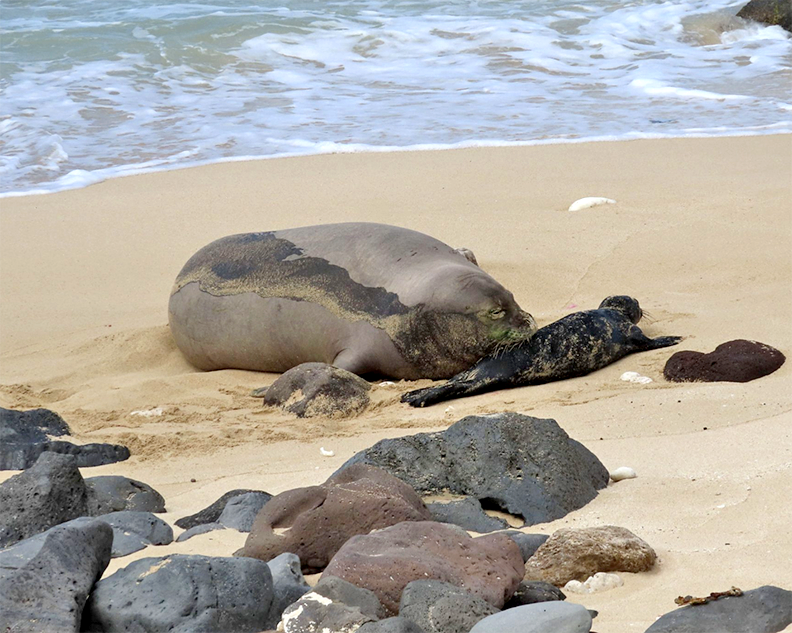
In Friendship House Garden, 20 garden beds, each 20-ft. long grow an abundance of kale, beets, lettuce, radishes and beans.
Column by Jan TenBruggencate
Farming has gone in two fundamentally different directions in the last couple of centuries.
It’s easy to simplify the argument into big farms and small. But it’s more than that. There are distinct agricultural systems.
The newer form of agriculture is essentially outward-looking, both in its inputs and its exports. That is to say, it brings in from outside the farm its essential soil fertility, pest control and even labor needs. The markets for its crops are also outside, and require sophisticated transportation system.
That’s modern industrial agriculture. Fertilizers and pesticides arrive aboard container ships. Among Kaua`i crops created through industrial agriculture, raw sugar went to California, corn seed goes to Kansas and sacks of taro go to Honolulu.
The other form of agriculture is essentially inward-looking. It is locally based, locally sourced and feeds folks locally. It might be a backyard garden some lettuce, peppers, tomatoes and string beans, and maybe a malunggay tree and a couple of papayas. It might be a small organic farm whose workers are family plus a couple of helpers.
Seeds are often collected and re-used, or obtained at local seed exchanges. Soil fertility is enhanced with cover crops, locally produced compost and chicken manure. Insect control is accomplished through crop rotation, varietal selection, soaps, and various attractants and repellents that tend not to come out of a 55-gallon drum.
Transporting its food products out of the district is seldom even considered. The products are eaten at home, or perhaps sold at a farmers’ market or local health food store.
There are agricultural systems that blend the two. Organic, to be clear, no longer carries the counter-culture, back-to-the-soil meaning it once did. To quote John Sununu, the former Republican senator from New Hampshire: “organic farming is a $30 billion industry dominated by Big Agriculture, backed up by Uncle Sam and a federal rulebook that gets longer every day.”
Perhaps our migration globally from the farms into the cities has mandated the division in food production between small and big. The 2010 Census says 83.7 percent of U.S. citizens lived in metro areas, and that percentage is growing. Hard to feed all those folks out of the backyard.
An insect biologist at the University of California at Berkeley, Miguel Altieri, wrote that as much as we revere small-scale farming, it’s not likely to be a major food source in the future.
“The expectation that a set of policy changes could be implemented for a renaissance of diversified or small scale farms may be unrealistic,” Altieri wrote.
Which leads to the question, are there features of organic or local farming that ought to be applied to Big Agriculture? The Union of Concerned Scientists, which argues that outward-looking ag is ultimately doomed, says it thinks so.
“It is time to transform agriculture into a sustainable enterprise, one based on systems that can be employed for centuries—not decades—without undermining the resources on which agricultural productivity depends. The question is how to do it.”
Jan TenBruggencate is a beekeeper, an author and the former science writer for The Honolulu Advertiser. He operates a communications company, Island Strategy LLC. He serves on the board of the Kaua’i Island Utility Cooperative and on the County Charter Review Commission.
Discover more from ForKauaiOnline
Subscribe to get the latest posts to your email.




Leave a Reply